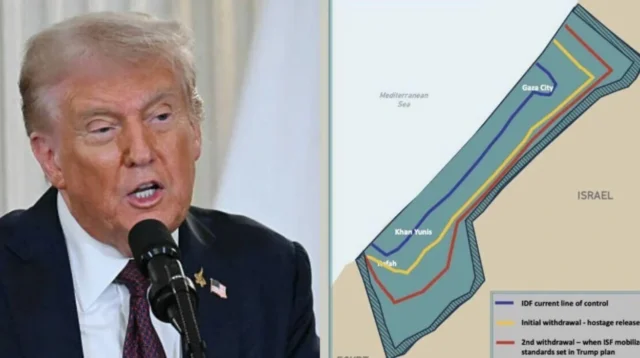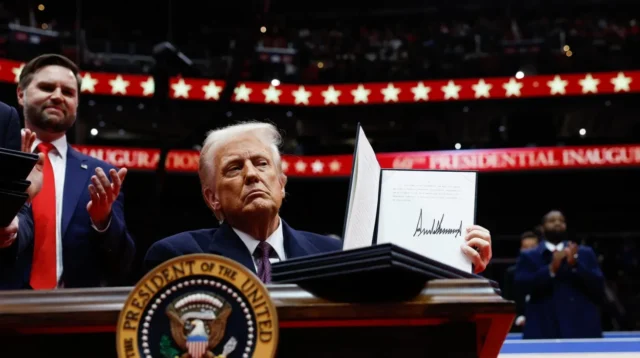With the August 1, 2025 tariff deadline fast approaching, South Africa faces the looming reality of a 30% reciprocal duty on its exports to the United States. This measure, driven by Washington’s assertive trade recalibration agenda, directly threatens two pillars of South Africa’s export economy: automotive manufacturing and agriculture. The automotive industry, a critical component of the country’s industrial infrastructure, risks being disrupted by the tariff hike, with direct consequences for supply chains, component manufacturers, and industrial labor markets.
The citrus and wine exports are also a form of agricultural product that has a threat of extinction in the American market. Increased pricing which translates to reduced competitiveness would reduce rural incomes, the effectiveness of commercial farming activities, and reduce the delivery of revenues in an already vulnerable agricultural economy. There is an imminent job destruction which economists observe could exceed 100,000 in both industries in case of the tariff institution without respite.
Broader Financial and Investor Pressures
With the deadline looming closer, Wall Street continues to show a negative sentiment in terms of investors. South African rand has fallen out due to the uncertainty in markets about the future of the deal as investors have shown panic about the impact of the loss of foreign exchange earnings. Unless resolved, this may hinder capital inflows and stability of trade especially to the sectors that depend on transatlantic business.
South Africa’s Revised Trade Offer Strategy
Terms of the New Proposal
To avert the tariffs, South Africa’s Trade Minister Parks Tau has confirmed that Pretoria is pursuing an “enhanced” trade package. The new offer will have faster importations of American chicken products, commitments to increase the buying of American liquefied natural gas (LNG) resources as well as investments of about 3.3 billion US dollars into American mines-related sectors.
These are done to help Washington to solve their trade imbalance issues and at the same time enhance sectoral ties. Energy diplomacy is signalled especially with the LNG commitment. Meanwhile, Minister Tau also said that although negotiations have been operating around the clock, there is still doubt that the U.S. will accept the proposals, particularly considering that the administration is trying to negotiate full restructuring of all bilateral agreements.
Challenges in Finalizing Terms
Despite South Africa’s overtures, officials face resistance in securing concrete flexibility from the U.S. trade delegation. With over 180 countries facing similar August 1 deadlines, Washington’s bandwidth for bespoke accommodations is limited. South African negotiators have emphasized alignment with American commercial interests, but delays in procedural clarity and legal vetting pose challenges in finalizing the package in time.
The Political and Strategic Environment
U.S. Trade Strategy and African Realignment
The imposition of reciprocal tariffs under the Trump administration’s 2025 trade policy reflects a strategic departure from multilateralism toward individualized, leverage-based negotiations. The African continent, long supported through preferential trade frameworks such as AGOA (African Growth and Opportunity Act), is now being pulled into a recalibrated global system where concessions are expected for continued market access.
South Africa, as one of Africa’s largest economies and mineral exporters, occupies a unique position in this dynamic. As the U.S. intensifies competition with China—Africa’s largest infrastructure investor—Pretoria becomes a key testing ground for Washington’s ability to secure influence through economic policy rather than security partnerships.
Domestic Policy and International Frictions
Adding complexity are concerns from U.S. officials about South Africa’s Black Economic Empowerment (BEE) program. While designed to address apartheid-era disparities, BEE’s preferential frameworks for local ownership and employment are viewed by some U.S. stakeholders as trade barriers. Negotiators face the challenge of defending BEE’s developmental role while accommodating U.S. insistence on free-market parity.
Compounding the tension is South Africa’s pending case against Israel at the International Court of Justice, which has drawn strong reactions from U.S. policymakers and Israeli counterparts. While not officially part of the trade talks, the diplomatic friction adds political sensitivity and limits goodwill from Washington’s side.
Domestic and Regional Implications
Risk to Economic Stability and Political Cohesion
The direct imposition of the 30% tariff would strike a severe blow to South Africa’s already strained economy. The automotive industry would see export margins collapse, while agriculture exporters would face surplus production with limited alternative buyers. Financial institutions expect depressed business confidence, reduced industrial output, and rising unemployment.
Domestic political repercussions may turn out to be equally disastrous. It can only leave the perception that the government has not done enough to protect employment and exports and hence potent dissatisfaction looms on the national elections in 2026. Opposition parties are already attacking the pace and mode of Pretoria and already this situation places pressure on the ruling coalition to come up with a trade solution very soon.
Regional Repercussions Across SADC
Trade also benefits South Africa which trades with the United States to support regional economic networks in the Southern African Development Community (SADC). Supply chains manufacturing, transportation and crop processing that are associated with United States export channels are entangled across borders. A failure of exports would cause a spill effect on the economy of the other neighboring countries, especially those that depend on the South African ports and the supply chain mechanisms to reach the global markets.
Strategic Openings in the Negotiation Framework
Building a Broader Investment-Based Trade Partnership
Time, however, is not on our side and the new proposal of Pretoria opens scope to rethink bilateral trade altogether. The LNG and mining investment promises point towards a patronizing association that emphasizes joint venture, cross-border funds flows and energy collaboration. They are the vehicles that could be the foundation of a stronger, more resistant partnership in the long run instead of the short-term tariff negotiation.
Negotiators have also started discussion on trade facilitation by relaxing some of the U.S. regulations requiring their South African counterparts to comply, especially in areas of pharmaceuticals and textile products. This would help in diversifying trade flows and the need to be dependent on only a couple of sectors that are also risky sectors such as automotive and agricultural.
Domestic Policy Calibration and Global Messaging
The negotiations offer an opportunity for South Africa to reassess how to harmonize domestic development frameworks with global trade norms. Clarifying the operational scope of BEE for foreign investors without compromising its equity goals may help dispel lingering market concerns.
Simultaneously, the talks offer a platform for South Africa to assert its diplomatic weight on the world stage. A successful outcome could position Pretoria as a capable, flexible player navigating the turbulence of new-era trade competition.
The Final Hours of Negotiation and Strategic Outlook
As the clock ticks toward the August 1 deadline, South African negotiators continue pushing for acceptance of their enhanced offer. With Washington maintaining a rigid position, the next few days carry substantial risk and consequence for South Africa’s economy and geopolitical stance. Minister Tau has reiterated the government’s commitment to a “strategic and fair resolution,” but has also acknowledged that the final outcome rests in U.S. hands.
Analyst Matthew Skrzypc has emphasized that
“While economic actors stand to benefit from the tariff relief, the absence of comprehensive strategic dialogue risks lingering uncertainties over South Africa’s trade and geopolitical alignments.”
His assessment reflects concerns among stakeholders that even a short-term deal might not resolve underlying questions around trade philosophy, geopolitical loyalty, and long-term policy alignment.
neat headline… shame there’s no deal behind it. even Reuters had to note “South Korea could not be reached for comment” and the terms “could not be verified.”
— Matthew Skrzypczak (@MatthewSkrzypc1) July 30, 2025
what is verified:
• a 15 % blanket tariff means U.S. importers pay the tax, not Seoul. those costs get passed…
South Africa’s effort to avert the tariff deadline is not merely about negotiating export access. It encapsulates deeper questions about how African nations assert their interests amid great power competition, preserve domestic developmental policy, and evolve from recipients of trade preferences to architects of global economic partnerships. The outcome of this high-stakes negotiation may shape how other African economies approach their own recalibrations in an era defined by assertive bilateralism and multipolar global economics.





